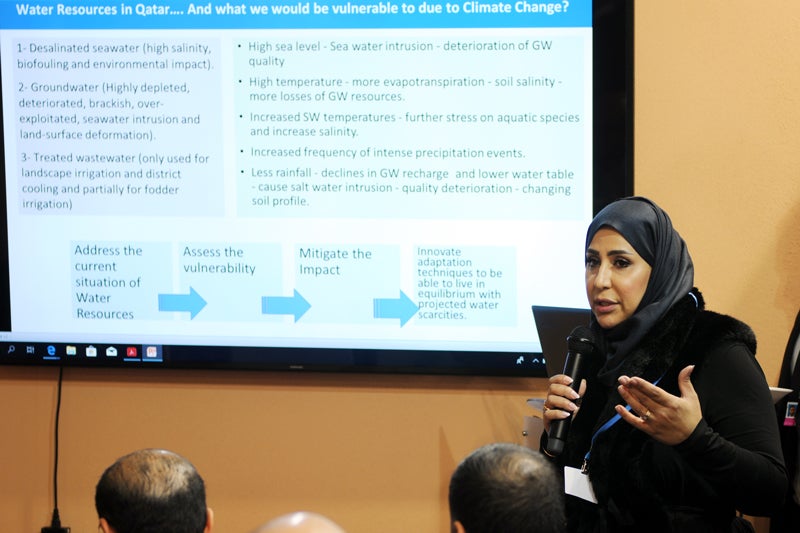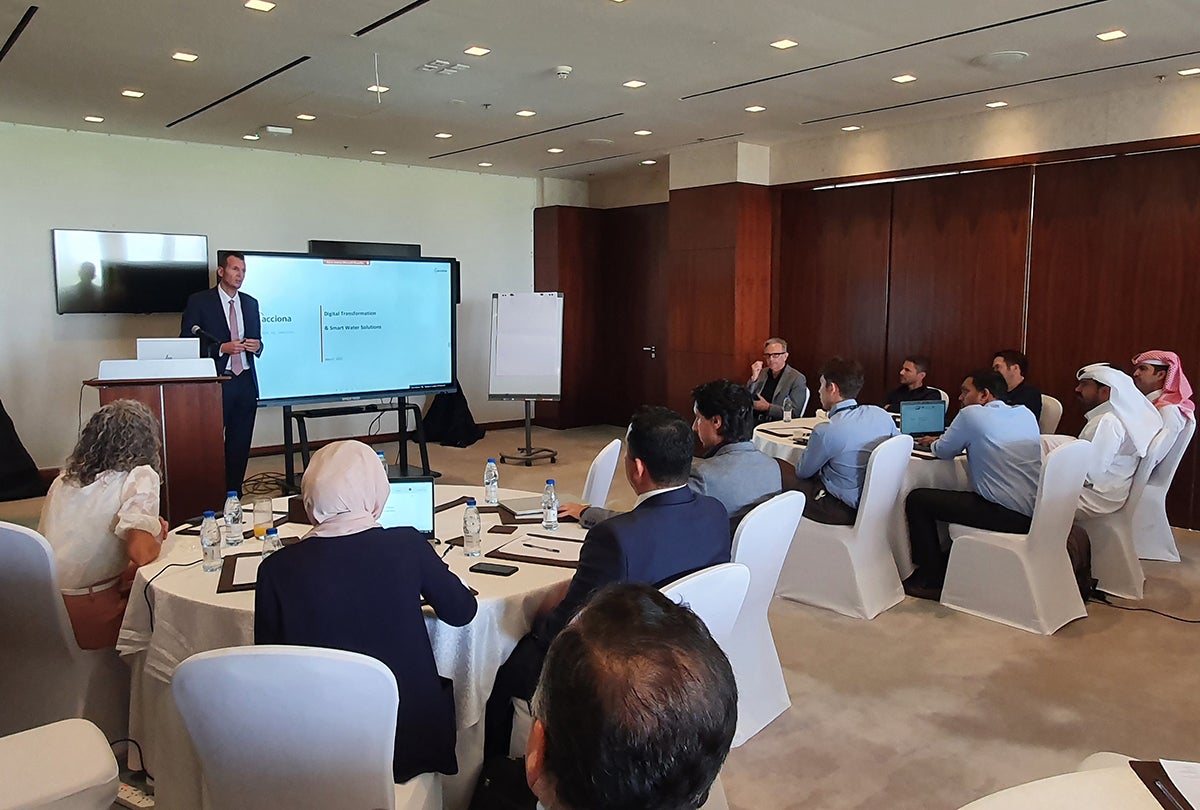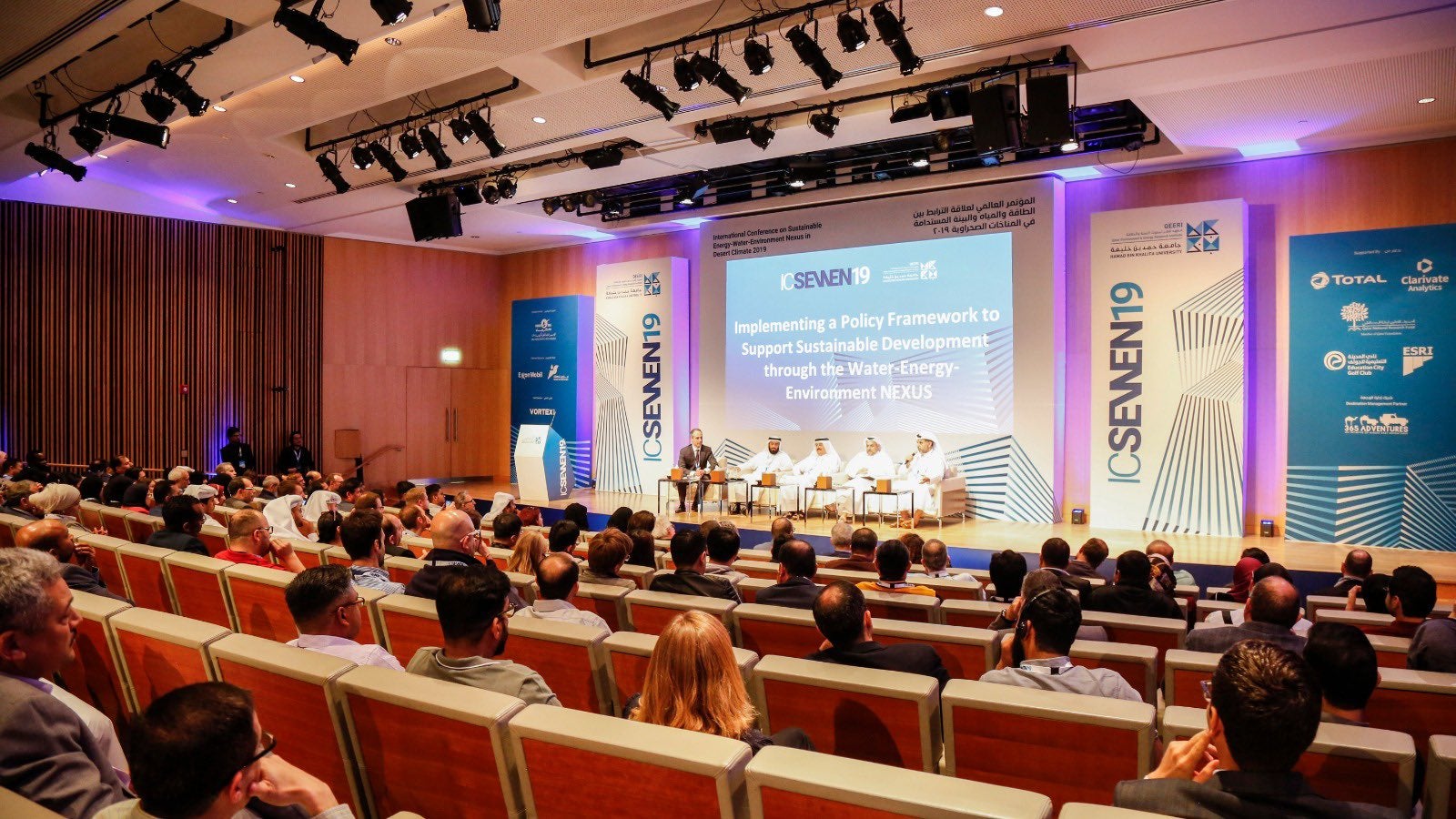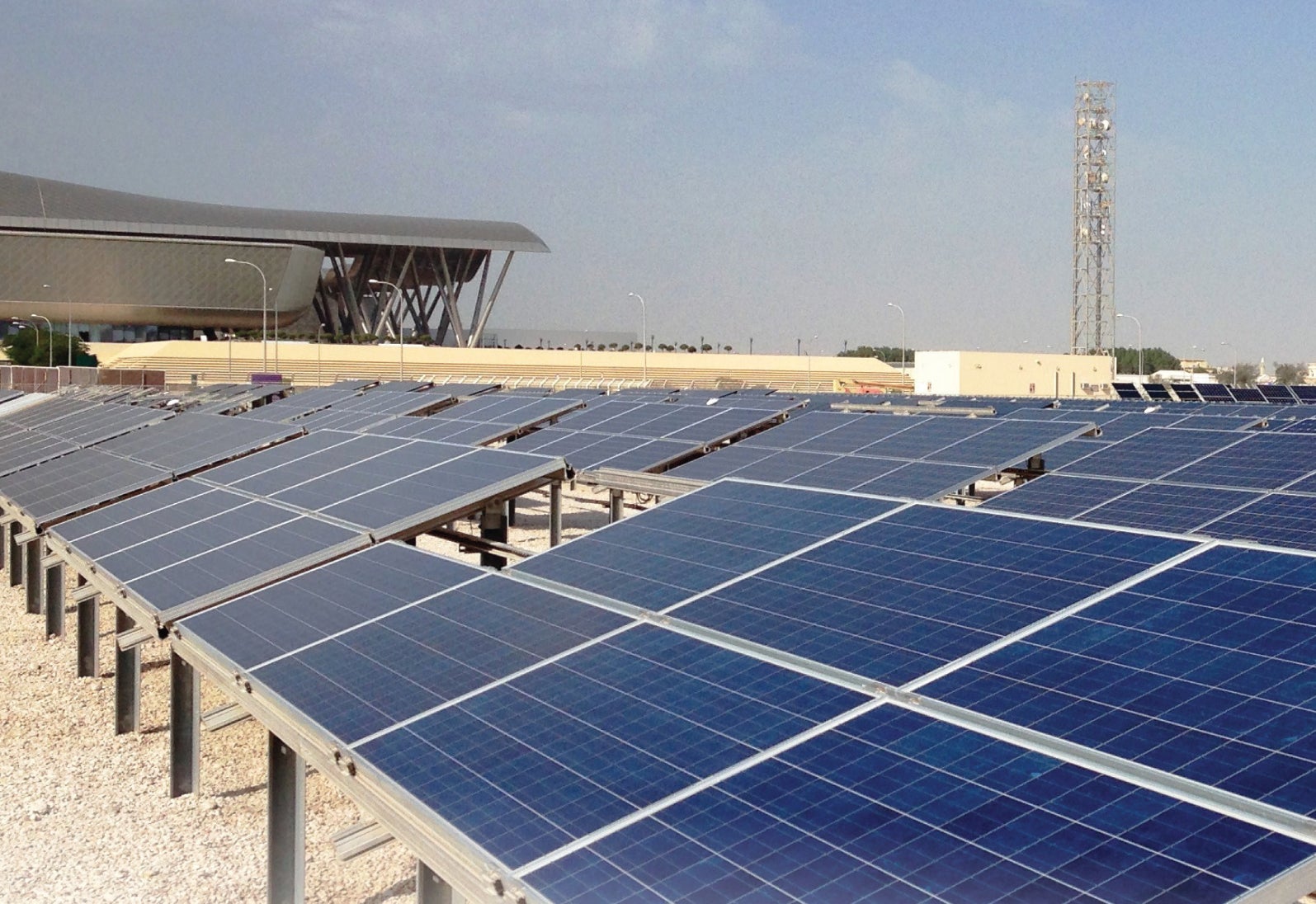
How Conflicts Impact Energy Security and Transition
As Europe prepares for an increased demand for heating during winter, what are the implications on the Paris Agreement?
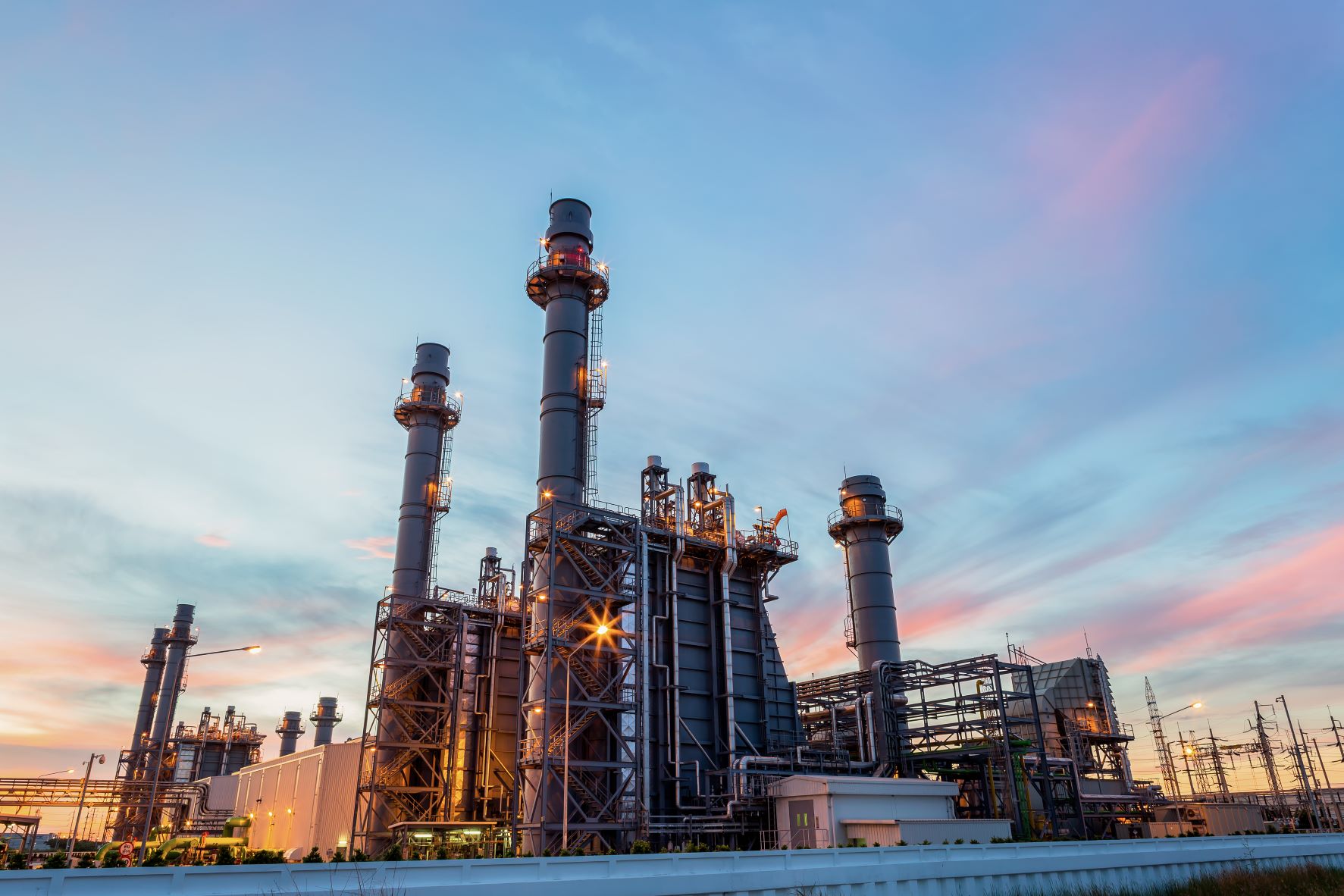
By Dr. Sa’d Shannak
Prior to addressing our article’s question, let’s define some concepts, attempt to unveil the implications on supply, demand, local and international markets, and discuss some lessons learned and best practices.
The International Energy Agency (IEA) defines energy security as the continuous and uninterrupted availability of energy sources at an affordable price and on a timely and sustainable basis.
One must also differentiate between long-term energy security as a means to supply energy under economic development and environmental requirements, and short-term energy security as a way of enabling the existing energy system to respond promptly to sudden changes in the supply-demand balance. It is worth mentioning that both long- and short-term energy security requires a complex, rigorous and comprehensive set of aligned initiatives, policies, and regulations to meet market-specific objectives in projecting a secure energy pathway for the nation.
However, energy transition, according to the International Renewable Energy Agency (IRENA), is a pathway toward the transformation of the global energy sector from fossil-based to zero-carbon. Renewable energy and energy efficiency measures are examples of options that can potentially achieve 90% of the required carbon reductions. Additional policy framework and market instruments, information technology and smart technology are needed to accelerate the decarbonization pathway.
Conflicts and Energy Supply
Historical changes in the world of energy systems have been triggered recently by conflicts. It is widely recognized that during conflicts, supply chain disruptions affect different sectors of the economy including energy. These disruptions are hindering energy supply and affecting its prices. With oil prices hitting their highest levels since 2008, several communities are suffering what has been described as a cost of living crisis with rising energy bills impacting households, businesses, and entire economies. The world continues to navigate a supply chain crisis post-pandemic along with its transition to greener energies. Overall, climate and energy leaders are sending mixed signals which creates more energy policy confusion and might derail energy transition and focus investments on energy security.
How Does Europe react?
In Europe, several initiatives have been announced and numerous plans have been proposed to rapidly reduce the reliance on foreign natural gas and its sourcing apportionment. As it is quite challenging to achieve this, given the shark share of current foreign natural gas in the EU markets, EU activists and attorneys advocated investment in nuclear power and natural gas as green options, thus securing more funding for those segments. According to the IEA , the EU could increase its nuclear production by 20 terawatt-hours (TWh) by the end of the year as a potential source of hydrogen. Though, any additional nuclear capacity will not contribute to the energy mix before 6 to 10 years (average construction time of nuclear power plants).
Belgium and Germany, in their efforts to strengthen their energy independence, have decided to delay their nuclear phase out by 10 years, initially scheduled for completion by 2025. Germany has also pledged around $ 217 billion to decarbonize its energy supply by 2035.
Furthermore, the EU is committed to building two liquified natural gas terminals to substitute foreign natural gas. There are plans in place to postpone the planned closure of coal-fired power plants since coal is becoming more economically competitive than gas. As gas prices have skyrocketed, countries might be considering turning back to other affordable options such as coal, which would result in slower recovery and structural change in global power. This can be interpreted as climate change targets that the EU pledged during COP26 no longer being top priority.
Indeed, many of the current recovery plans focus on the energy supply and security aspects, namely before the cold winter weather sweeps over Europe and demand for heating increases, but what are the implications on the Paris Agreement? The EU has been at the front line of international efforts to combat climate change by limiting global warming to well below 2°C and pursuing efforts to limit it to 1.5°C. In late 2020, the EU and its member states presented its updated and enhanced nationally determined contributions from 2018 (40% emissions reduction by 2030), with the new target being to cut emissions from 1990 levels by at least 55% by 2030. So, would all these targets continue to hold?
Global Oil Markets Reshape
This complexity has persistently resulted in higher oil price volatility. Oil prices have hit another record high as oil and gas costs rise amid concerns of a global economic shock from the current conflict. The US suggested a ban on Russian energy and advised other countries to increase supplies, although that could have enormous ramifications around Europe and the world. Furthermore, the current Biden administration has made several calls for the Organization of the Petroleum Exporting Countries (OPEC) to put more oil in the markets. In light of the current chaotic geopolitical context, the crisis has spilled over to other sectors as numerous everyday items from food to petrol and heating, are already rising at their fastest rate to increase allover costs of living.
The major use of oil and gas is not only for fuel and electricity generation, as there are many other essential uses in our daily life such as electronics, construction, medical, agriculture, household, clothing, etc. Hence, it is more likely that the oil and gas industry will remain part of the global energy mix for some decades to come. While there is a huge momentum to embark on a low carbon pathway to meet climate change objectives, the IEA expects demand for oil to increase 11% and reach 103.5 million barrels of oil per day (mb/d) by 2040 from the historical record of 92.5 mb/d as in 2015. This is very well aligned with the useful nature of the oil and gas industry as it is not only a fossil fuel supply source but also a fundamental enabler of renewables. It backs it up whenever needed because of the intermittent nature of renewables. it's also the path to future technologies such as hydrogen.
Energy Security and Energy Transition Integration
Overall, energy supply is a long-term strategic thinking issue and shouldn’t be affected by technology trends or geopolitical events. More importantly, energy security and energy transition go hand in hand. Thus, building energy transition requires energy security and vice versa in the short and long-term actions to strengthen the stability of supply and to curb the impact of possible future disruption in the market. Currently, most political discussion is over the energy supply side; reducing energy supply from fossil fuels as well as redefining investments going into oil and gas to meet climate change objectives. However, less attention has been paid to the demand side. Climate change is fundamentally a consumption-based issue and more focus should be oriented toward the demand side by advancing energy efficiency and tackling infrastructure bottlenecks.
Qatar Sets an Example
One, therefore, understands the importance of balancing long and short-term energy supply objectives. Qatar, as an energy exporter, has set a perfect example by showing solidarity to support the EU's short-term natural gas supply during the current crisis and at the same time explore long-term supply options with future markets. H.E. Saad Sherida Al-Kaabi, Qatar’s Minister of State for Energy Affairs and also the President and CEO of QatarEnergy, told CNN that although Qatar’s current capacity won’t satisfy European demand, they have invested $28 billion into expanding its giant North Field. As a result, he expects gas capacity to rise by more than 60% in four years to meet long-term future supply. Furthermore, H.E. Al-Kaabi revealed a clear strategic plan that will see around half of the new plant capacity supply east of Suez, and the other half supply the west of Suez.
One also understands Qatar’s good governance position, as it has made an early investment in liquefied natural gas which allowed the country to establish itself as one of the world’s largest exporters of LNG. Capitalizing on market influence, financial wealth, and strong international political relationships allow the country to balance both long and short-term energy supplies across different markets.
At QEERI, we advance methods and models in a way that we can address short and long-term energy supply-demand objectives. We develop energy systems models, which are one option to evaluate and set out cost-effective and stringent carbon mitigation pathways. Such tools can elucidate the position and value of technologies within the energy system and explore optimal times of investment. We also employ econometric modeling to simulate energy-economy interactions and analyze energy policy issues in the short and long term.
It is well established now that there are many controllable and uncontrollable drivers affecting the energy sector including climate, geopolitics, supply and demand, etc. The seriousness of managing the sector in this dynamic ecosystem, has made it imperative that policymakers begin to mainstream multi-sectoral and multi-objectives in development policies and strategies.
* Dr. Sa’d Shannak is a scientist at the Qatar Environment and Energy Research Institute at Hamad Bin Khalifa University in Qatar. The views expressed are the author’s own and do not necessarily reflect the university’s official stance.
Related News
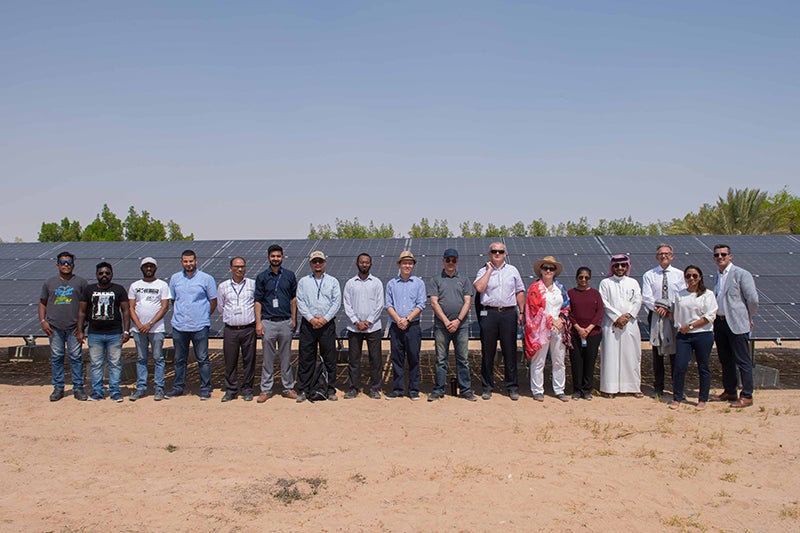
HBKU’s QEERI Launches Pilot Project to Supply Sustainable Energy to Farms in Qatar

Third Edition of QEERI’s Young Innovator Awards Invites Youth to Create New Solutions and Enhance Sustainability for Arid Environments

HBKU’s Qatar Environment and Energy Research Institute Hosts ISO Meeting to Discuss Worldwide Corrosion Standards for Oil and Gas Industry

Qatar Environment and Energy Research Institute Holds Science Majlis to Tackle the Challenges of Corrosion
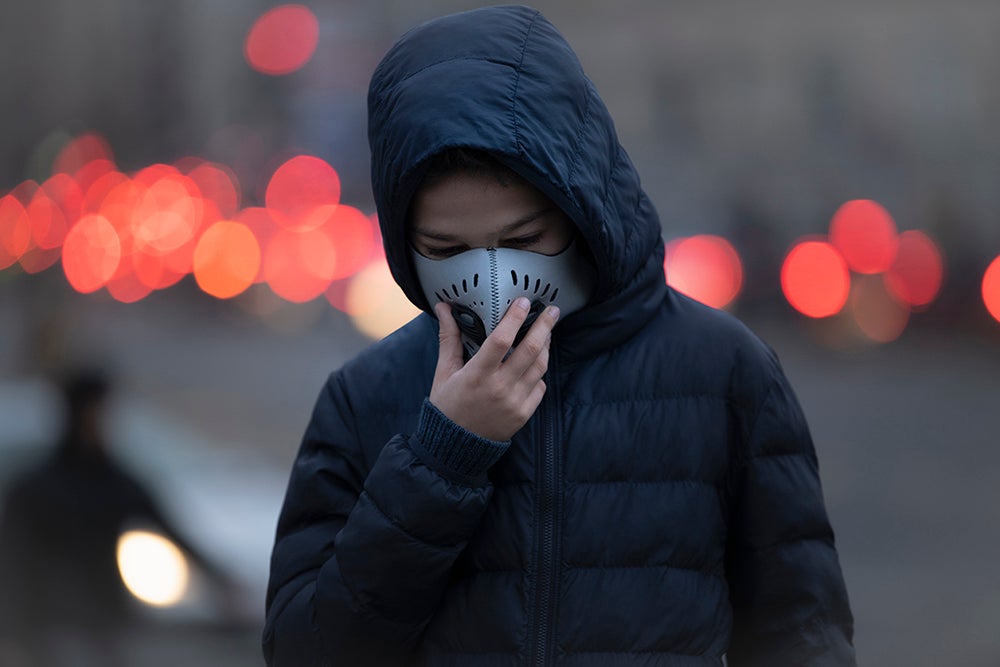
Air Quality in focus for SC collaboration with HBKU’s Qatar Environment and Energy Research Institute (QEERI)

HBKU’s Qatar Environment and Energy Research Institute Announces Young Innovator Awards Competition 2020
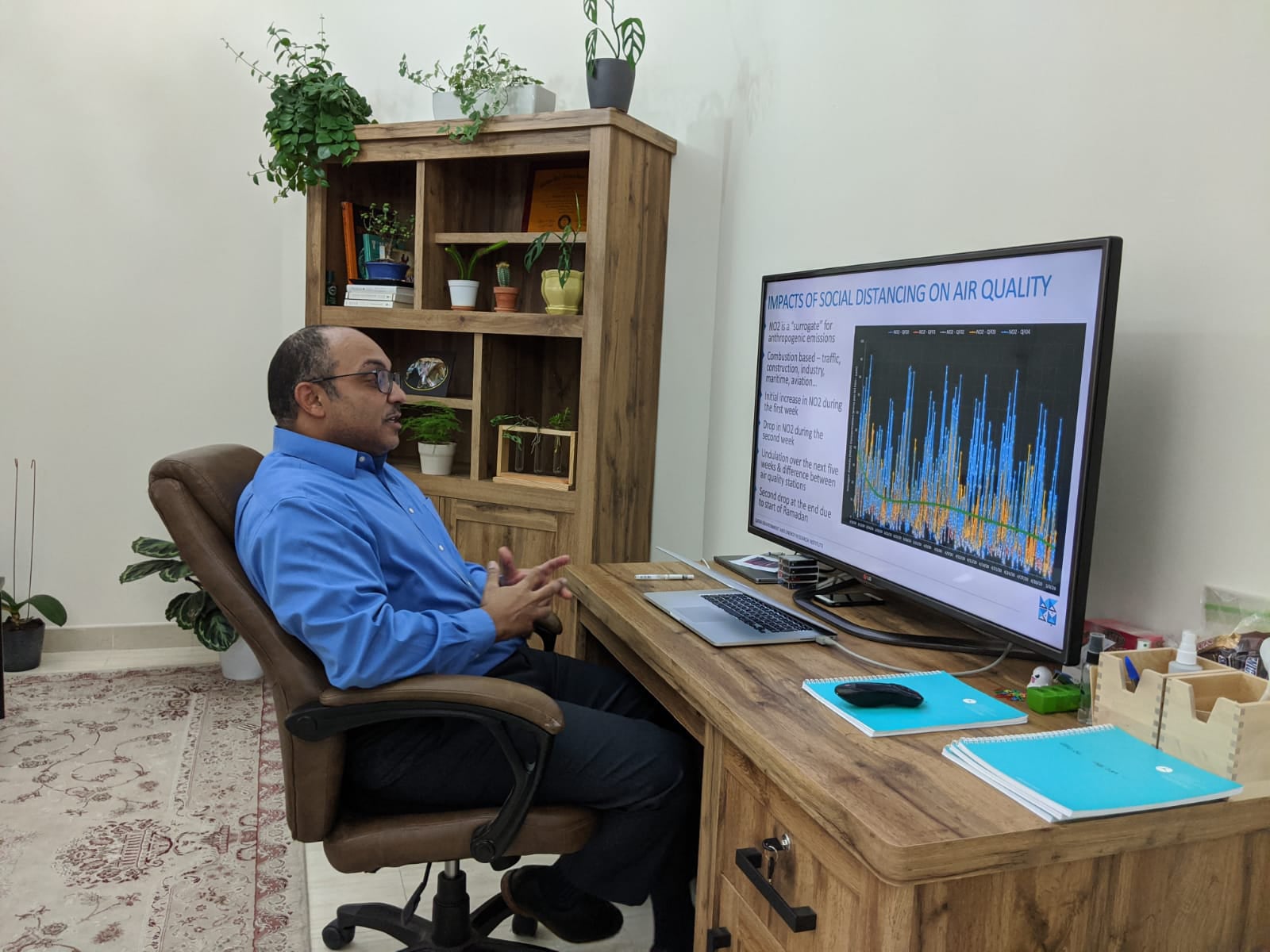
HBKU’s Qatar Environment and Energy Research Institute COVID-19 Webinar Series Tackles Impact on Natural Resources
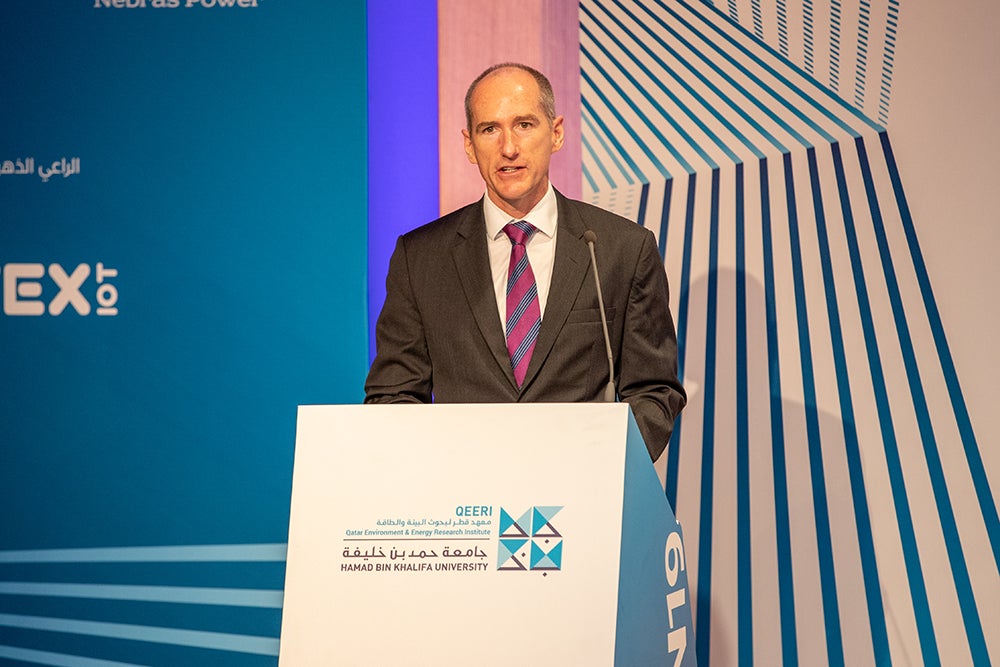
Qatar Environment and Energy Research Institute Conference Tackles Desert Climate Challenges

QEERI’s Newly Launched Corrosion Center Organizes Forum to Tackle Impact of Corrosion on Environment

HBKU’s QEERI Launches Pilot Project to Supply Sustainable Energy to Farms in Qatar

Third Edition of QEERI’s Young Innovator Awards Invites Youth to Create New Solutions and Enhance Sustainability for Arid Environments

HBKU’s Qatar Environment and Energy Research Institute Hosts ISO Meeting to Discuss Worldwide Corrosion Standards for Oil and Gas Industry

Qatar Environment and Energy Research Institute Holds Science Majlis to Tackle the Challenges of Corrosion

Air Quality in focus for SC collaboration with HBKU’s Qatar Environment and Energy Research Institute (QEERI)

HBKU’s Qatar Environment and Energy Research Institute Announces Young Innovator Awards Competition 2020

HBKU’s Qatar Environment and Energy Research Institute COVID-19 Webinar Series Tackles Impact on Natural Resources

Qatar Environment and Energy Research Institute Conference Tackles Desert Climate Challenges

QEERI’s Newly Launched Corrosion Center Organizes Forum to Tackle Impact of Corrosion on Environment

HBKU’s QEERI Launches Pilot Project to Supply Sustainable Energy to Farms in Qatar

Third Edition of QEERI’s Young Innovator Awards Invites Youth to Create New Solutions and Enhance Sustainability for Arid Environments

HBKU’s Qatar Environment and Energy Research Institute Hosts ISO Meeting to Discuss Worldwide Corrosion Standards for Oil and Gas Industry

Qatar Environment and Energy Research Institute Holds Science Majlis to Tackle the Challenges of Corrosion

Air Quality in focus for SC collaboration with HBKU’s Qatar Environment and Energy Research Institute (QEERI)

HBKU’s Qatar Environment and Energy Research Institute Announces Young Innovator Awards Competition 2020

HBKU’s Qatar Environment and Energy Research Institute COVID-19 Webinar Series Tackles Impact on Natural Resources

Qatar Environment and Energy Research Institute Conference Tackles Desert Climate Challenges

QEERI’s Newly Launched Corrosion Center Organizes Forum to Tackle Impact of Corrosion on Environment

HBKU’s QEERI Launches Pilot Project to Supply Sustainable Energy to Farms in Qatar

Third Edition of QEERI’s Young Innovator Awards Invites Youth to Create New Solutions and Enhance Sustainability for Arid Environments

HBKU’s Qatar Environment and Energy Research Institute Hosts ISO Meeting to Discuss Worldwide Corrosion Standards for Oil and Gas Industry

Qatar Environment and Energy Research Institute Holds Science Majlis to Tackle the Challenges of Corrosion

Air Quality in focus for SC collaboration with HBKU’s Qatar Environment and Energy Research Institute (QEERI)

HBKU’s Qatar Environment and Energy Research Institute Announces Young Innovator Awards Competition 2020

HBKU’s Qatar Environment and Energy Research Institute COVID-19 Webinar Series Tackles Impact on Natural Resources

Qatar Environment and Energy Research Institute Conference Tackles Desert Climate Challenges

QEERI’s Newly Launched Corrosion Center Organizes Forum to Tackle Impact of Corrosion on Environment

HBKU’s QEERI Launches Pilot Project to Supply Sustainable Energy to Farms in Qatar

Third Edition of QEERI’s Young Innovator Awards Invites Youth to Create New Solutions and Enhance Sustainability for Arid Environments

HBKU’s Qatar Environment and Energy Research Institute Hosts ISO Meeting to Discuss Worldwide Corrosion Standards for Oil and Gas Industry

Qatar Environment and Energy Research Institute Holds Science Majlis to Tackle the Challenges of Corrosion

Air Quality in focus for SC collaboration with HBKU’s Qatar Environment and Energy Research Institute (QEERI)

HBKU’s Qatar Environment and Energy Research Institute Announces Young Innovator Awards Competition 2020

HBKU’s Qatar Environment and Energy Research Institute COVID-19 Webinar Series Tackles Impact on Natural Resources

Qatar Environment and Energy Research Institute Conference Tackles Desert Climate Challenges

QEERI’s Newly Launched Corrosion Center Organizes Forum to Tackle Impact of Corrosion on Environment

HBKU’s QEERI Launches Pilot Project to Supply Sustainable Energy to Farms in Qatar

Third Edition of QEERI’s Young Innovator Awards Invites Youth to Create New Solutions and Enhance Sustainability for Arid Environments

HBKU’s Qatar Environment and Energy Research Institute Hosts ISO Meeting to Discuss Worldwide Corrosion Standards for Oil and Gas Industry

Qatar Environment and Energy Research Institute Holds Science Majlis to Tackle the Challenges of Corrosion

Air Quality in focus for SC collaboration with HBKU’s Qatar Environment and Energy Research Institute (QEERI)

HBKU’s Qatar Environment and Energy Research Institute Announces Young Innovator Awards Competition 2020

HBKU’s Qatar Environment and Energy Research Institute COVID-19 Webinar Series Tackles Impact on Natural Resources

Qatar Environment and Energy Research Institute Conference Tackles Desert Climate Challenges

QEERI’s Newly Launched Corrosion Center Organizes Forum to Tackle Impact of Corrosion on Environment

HBKU’s QEERI Launches Pilot Project to Supply Sustainable Energy to Farms in Qatar

Third Edition of QEERI’s Young Innovator Awards Invites Youth to Create New Solutions and Enhance Sustainability for Arid Environments

HBKU’s Qatar Environment and Energy Research Institute Hosts ISO Meeting to Discuss Worldwide Corrosion Standards for Oil and Gas Industry

Qatar Environment and Energy Research Institute Holds Science Majlis to Tackle the Challenges of Corrosion

Air Quality in focus for SC collaboration with HBKU’s Qatar Environment and Energy Research Institute (QEERI)

HBKU’s Qatar Environment and Energy Research Institute Announces Young Innovator Awards Competition 2020

HBKU’s Qatar Environment and Energy Research Institute COVID-19 Webinar Series Tackles Impact on Natural Resources

Qatar Environment and Energy Research Institute Conference Tackles Desert Climate Challenges

QEERI’s Newly Launched Corrosion Center Organizes Forum to Tackle Impact of Corrosion on Environment

HBKU’s QEERI Launches Pilot Project to Supply Sustainable Energy to Farms in Qatar

Third Edition of QEERI’s Young Innovator Awards Invites Youth to Create New Solutions and Enhance Sustainability for Arid Environments

HBKU’s Qatar Environment and Energy Research Institute Hosts ISO Meeting to Discuss Worldwide Corrosion Standards for Oil and Gas Industry

Qatar Environment and Energy Research Institute Holds Science Majlis to Tackle the Challenges of Corrosion

Air Quality in focus for SC collaboration with HBKU’s Qatar Environment and Energy Research Institute (QEERI)

HBKU’s Qatar Environment and Energy Research Institute Announces Young Innovator Awards Competition 2020

HBKU’s Qatar Environment and Energy Research Institute COVID-19 Webinar Series Tackles Impact on Natural Resources

Qatar Environment and Energy Research Institute Conference Tackles Desert Climate Challenges

QEERI’s Newly Launched Corrosion Center Organizes Forum to Tackle Impact of Corrosion on Environment

HBKU’s QEERI Launches Pilot Project to Supply Sustainable Energy to Farms in Qatar

Third Edition of QEERI’s Young Innovator Awards Invites Youth to Create New Solutions and Enhance Sustainability for Arid Environments

HBKU’s Qatar Environment and Energy Research Institute Hosts ISO Meeting to Discuss Worldwide Corrosion Standards for Oil and Gas Industry

Qatar Environment and Energy Research Institute Holds Science Majlis to Tackle the Challenges of Corrosion

Air Quality in focus for SC collaboration with HBKU’s Qatar Environment and Energy Research Institute (QEERI)

HBKU’s Qatar Environment and Energy Research Institute Announces Young Innovator Awards Competition 2020

HBKU’s Qatar Environment and Energy Research Institute COVID-19 Webinar Series Tackles Impact on Natural Resources

Qatar Environment and Energy Research Institute Conference Tackles Desert Climate Challenges

QEERI’s Newly Launched Corrosion Center Organizes Forum to Tackle Impact of Corrosion on Environment

HBKU’s QEERI Launches Pilot Project to Supply Sustainable Energy to Farms in Qatar

Third Edition of QEERI’s Young Innovator Awards Invites Youth to Create New Solutions and Enhance Sustainability for Arid Environments

HBKU’s Qatar Environment and Energy Research Institute Hosts ISO Meeting to Discuss Worldwide Corrosion Standards for Oil and Gas Industry

Qatar Environment and Energy Research Institute Holds Science Majlis to Tackle the Challenges of Corrosion

Air Quality in focus for SC collaboration with HBKU’s Qatar Environment and Energy Research Institute (QEERI)

HBKU’s Qatar Environment and Energy Research Institute Announces Young Innovator Awards Competition 2020

HBKU’s Qatar Environment and Energy Research Institute COVID-19 Webinar Series Tackles Impact on Natural Resources

Qatar Environment and Energy Research Institute Conference Tackles Desert Climate Challenges

QEERI’s Newly Launched Corrosion Center Organizes Forum to Tackle Impact of Corrosion on Environment

HBKU’s QEERI Launches Pilot Project to Supply Sustainable Energy to Farms in Qatar

Third Edition of QEERI’s Young Innovator Awards Invites Youth to Create New Solutions and Enhance Sustainability for Arid Environments

HBKU’s Qatar Environment and Energy Research Institute Hosts ISO Meeting to Discuss Worldwide Corrosion Standards for Oil and Gas Industry

Qatar Environment and Energy Research Institute Holds Science Majlis to Tackle the Challenges of Corrosion

Air Quality in focus for SC collaboration with HBKU’s Qatar Environment and Energy Research Institute (QEERI)

HBKU’s Qatar Environment and Energy Research Institute Announces Young Innovator Awards Competition 2020

HBKU’s Qatar Environment and Energy Research Institute COVID-19 Webinar Series Tackles Impact on Natural Resources

Qatar Environment and Energy Research Institute Conference Tackles Desert Climate Challenges

QEERI’s Newly Launched Corrosion Center Organizes Forum to Tackle Impact of Corrosion on Environment

HBKU’s QEERI Launches Pilot Project to Supply Sustainable Energy to Farms in Qatar

Third Edition of QEERI’s Young Innovator Awards Invites Youth to Create New Solutions and Enhance Sustainability for Arid Environments

HBKU’s Qatar Environment and Energy Research Institute Hosts ISO Meeting to Discuss Worldwide Corrosion Standards for Oil and Gas Industry

Qatar Environment and Energy Research Institute Holds Science Majlis to Tackle the Challenges of Corrosion

Air Quality in focus for SC collaboration with HBKU’s Qatar Environment and Energy Research Institute (QEERI)

HBKU’s Qatar Environment and Energy Research Institute Announces Young Innovator Awards Competition 2020

HBKU’s Qatar Environment and Energy Research Institute COVID-19 Webinar Series Tackles Impact on Natural Resources

Qatar Environment and Energy Research Institute Conference Tackles Desert Climate Challenges

QEERI’s Newly Launched Corrosion Center Organizes Forum to Tackle Impact of Corrosion on Environment

HBKU’s QEERI Launches Pilot Project to Supply Sustainable Energy to Farms in Qatar

Third Edition of QEERI’s Young Innovator Awards Invites Youth to Create New Solutions and Enhance Sustainability for Arid Environments

HBKU’s Qatar Environment and Energy Research Institute Hosts ISO Meeting to Discuss Worldwide Corrosion Standards for Oil and Gas Industry

Qatar Environment and Energy Research Institute Holds Science Majlis to Tackle the Challenges of Corrosion

Air Quality in focus for SC collaboration with HBKU’s Qatar Environment and Energy Research Institute (QEERI)

HBKU’s Qatar Environment and Energy Research Institute Announces Young Innovator Awards Competition 2020

HBKU’s Qatar Environment and Energy Research Institute COVID-19 Webinar Series Tackles Impact on Natural Resources

Qatar Environment and Energy Research Institute Conference Tackles Desert Climate Challenges

QEERI’s Newly Launched Corrosion Center Organizes Forum to Tackle Impact of Corrosion on Environment

HBKU’s QEERI Launches Pilot Project to Supply Sustainable Energy to Farms in Qatar

Third Edition of QEERI’s Young Innovator Awards Invites Youth to Create New Solutions and Enhance Sustainability for Arid Environments

HBKU’s Qatar Environment and Energy Research Institute Hosts ISO Meeting to Discuss Worldwide Corrosion Standards for Oil and Gas Industry

Qatar Environment and Energy Research Institute Holds Science Majlis to Tackle the Challenges of Corrosion

Air Quality in focus for SC collaboration with HBKU’s Qatar Environment and Energy Research Institute (QEERI)

HBKU’s Qatar Environment and Energy Research Institute Announces Young Innovator Awards Competition 2020

HBKU’s Qatar Environment and Energy Research Institute COVID-19 Webinar Series Tackles Impact on Natural Resources

Qatar Environment and Energy Research Institute Conference Tackles Desert Climate Challenges

QEERI’s Newly Launched Corrosion Center Organizes Forum to Tackle Impact of Corrosion on Environment

HBKU’s QEERI Launches Pilot Project to Supply Sustainable Energy to Farms in Qatar

Third Edition of QEERI’s Young Innovator Awards Invites Youth to Create New Solutions and Enhance Sustainability for Arid Environments

HBKU’s Qatar Environment and Energy Research Institute Hosts ISO Meeting to Discuss Worldwide Corrosion Standards for Oil and Gas Industry

Qatar Environment and Energy Research Institute Holds Science Majlis to Tackle the Challenges of Corrosion

Air Quality in focus for SC collaboration with HBKU’s Qatar Environment and Energy Research Institute (QEERI)

HBKU’s Qatar Environment and Energy Research Institute Announces Young Innovator Awards Competition 2020

HBKU’s Qatar Environment and Energy Research Institute COVID-19 Webinar Series Tackles Impact on Natural Resources

Qatar Environment and Energy Research Institute Conference Tackles Desert Climate Challenges

QEERI’s Newly Launched Corrosion Center Organizes Forum to Tackle Impact of Corrosion on Environment

HBKU’s QEERI Launches Pilot Project to Supply Sustainable Energy to Farms in Qatar

Third Edition of QEERI’s Young Innovator Awards Invites Youth to Create New Solutions and Enhance Sustainability for Arid Environments

HBKU’s Qatar Environment and Energy Research Institute Hosts ISO Meeting to Discuss Worldwide Corrosion Standards for Oil and Gas Industry

Qatar Environment and Energy Research Institute Holds Science Majlis to Tackle the Challenges of Corrosion

Air Quality in focus for SC collaboration with HBKU’s Qatar Environment and Energy Research Institute (QEERI)

HBKU’s Qatar Environment and Energy Research Institute Announces Young Innovator Awards Competition 2020

HBKU’s Qatar Environment and Energy Research Institute COVID-19 Webinar Series Tackles Impact on Natural Resources

Qatar Environment and Energy Research Institute Conference Tackles Desert Climate Challenges

QEERI’s Newly Launched Corrosion Center Organizes Forum to Tackle Impact of Corrosion on Environment

HBKU’s QEERI Launches Pilot Project to Supply Sustainable Energy to Farms in Qatar

Third Edition of QEERI’s Young Innovator Awards Invites Youth to Create New Solutions and Enhance Sustainability for Arid Environments

HBKU’s Qatar Environment and Energy Research Institute Hosts ISO Meeting to Discuss Worldwide Corrosion Standards for Oil and Gas Industry

Qatar Environment and Energy Research Institute Holds Science Majlis to Tackle the Challenges of Corrosion

Air Quality in focus for SC collaboration with HBKU’s Qatar Environment and Energy Research Institute (QEERI)

HBKU’s Qatar Environment and Energy Research Institute Announces Young Innovator Awards Competition 2020

HBKU’s Qatar Environment and Energy Research Institute COVID-19 Webinar Series Tackles Impact on Natural Resources

Qatar Environment and Energy Research Institute Conference Tackles Desert Climate Challenges

QEERI’s Newly Launched Corrosion Center Organizes Forum to Tackle Impact of Corrosion on Environment

HBKU’s QEERI Launches Pilot Project to Supply Sustainable Energy to Farms in Qatar

Third Edition of QEERI’s Young Innovator Awards Invites Youth to Create New Solutions and Enhance Sustainability for Arid Environments

HBKU’s Qatar Environment and Energy Research Institute Hosts ISO Meeting to Discuss Worldwide Corrosion Standards for Oil and Gas Industry

Qatar Environment and Energy Research Institute Holds Science Majlis to Tackle the Challenges of Corrosion

Air Quality in focus for SC collaboration with HBKU’s Qatar Environment and Energy Research Institute (QEERI)

HBKU’s Qatar Environment and Energy Research Institute Announces Young Innovator Awards Competition 2020

HBKU’s Qatar Environment and Energy Research Institute COVID-19 Webinar Series Tackles Impact on Natural Resources

Qatar Environment and Energy Research Institute Conference Tackles Desert Climate Challenges

QEERI’s Newly Launched Corrosion Center Organizes Forum to Tackle Impact of Corrosion on Environment

HBKU’s QEERI Launches Pilot Project to Supply Sustainable Energy to Farms in Qatar

Third Edition of QEERI’s Young Innovator Awards Invites Youth to Create New Solutions and Enhance Sustainability for Arid Environments

HBKU’s Qatar Environment and Energy Research Institute Hosts ISO Meeting to Discuss Worldwide Corrosion Standards for Oil and Gas Industry

Qatar Environment and Energy Research Institute Holds Science Majlis to Tackle the Challenges of Corrosion

Air Quality in focus for SC collaboration with HBKU’s Qatar Environment and Energy Research Institute (QEERI)

HBKU’s Qatar Environment and Energy Research Institute Announces Young Innovator Awards Competition 2020

HBKU’s Qatar Environment and Energy Research Institute COVID-19 Webinar Series Tackles Impact on Natural Resources

Qatar Environment and Energy Research Institute Conference Tackles Desert Climate Challenges

QEERI’s Newly Launched Corrosion Center Organizes Forum to Tackle Impact of Corrosion on Environment

HBKU’s QEERI Launches Pilot Project to Supply Sustainable Energy to Farms in Qatar

Third Edition of QEERI’s Young Innovator Awards Invites Youth to Create New Solutions and Enhance Sustainability for Arid Environments

HBKU’s Qatar Environment and Energy Research Institute Hosts ISO Meeting to Discuss Worldwide Corrosion Standards for Oil and Gas Industry

Qatar Environment and Energy Research Institute Holds Science Majlis to Tackle the Challenges of Corrosion

Air Quality in focus for SC collaboration with HBKU’s Qatar Environment and Energy Research Institute (QEERI)

HBKU’s Qatar Environment and Energy Research Institute Announces Young Innovator Awards Competition 2020

HBKU’s Qatar Environment and Energy Research Institute COVID-19 Webinar Series Tackles Impact on Natural Resources

Qatar Environment and Energy Research Institute Conference Tackles Desert Climate Challenges

QEERI’s Newly Launched Corrosion Center Organizes Forum to Tackle Impact of Corrosion on Environment

HBKU’s QEERI Launches Pilot Project to Supply Sustainable Energy to Farms in Qatar

Third Edition of QEERI’s Young Innovator Awards Invites Youth to Create New Solutions and Enhance Sustainability for Arid Environments

HBKU’s Qatar Environment and Energy Research Institute Hosts ISO Meeting to Discuss Worldwide Corrosion Standards for Oil and Gas Industry

Qatar Environment and Energy Research Institute Holds Science Majlis to Tackle the Challenges of Corrosion

Air Quality in focus for SC collaboration with HBKU’s Qatar Environment and Energy Research Institute (QEERI)

HBKU’s Qatar Environment and Energy Research Institute Announces Young Innovator Awards Competition 2020

HBKU’s Qatar Environment and Energy Research Institute COVID-19 Webinar Series Tackles Impact on Natural Resources

Qatar Environment and Energy Research Institute Conference Tackles Desert Climate Challenges

QEERI’s Newly Launched Corrosion Center Organizes Forum to Tackle Impact of Corrosion on Environment

HBKU’s QEERI Launches Pilot Project to Supply Sustainable Energy to Farms in Qatar

Third Edition of QEERI’s Young Innovator Awards Invites Youth to Create New Solutions and Enhance Sustainability for Arid Environments

HBKU’s Qatar Environment and Energy Research Institute Hosts ISO Meeting to Discuss Worldwide Corrosion Standards for Oil and Gas Industry

Qatar Environment and Energy Research Institute Holds Science Majlis to Tackle the Challenges of Corrosion

Air Quality in focus for SC collaboration with HBKU’s Qatar Environment and Energy Research Institute (QEERI)

HBKU’s Qatar Environment and Energy Research Institute Announces Young Innovator Awards Competition 2020

HBKU’s Qatar Environment and Energy Research Institute COVID-19 Webinar Series Tackles Impact on Natural Resources

Qatar Environment and Energy Research Institute Conference Tackles Desert Climate Challenges

QEERI’s Newly Launched Corrosion Center Organizes Forum to Tackle Impact of Corrosion on Environment

HBKU’s QEERI Launches Pilot Project to Supply Sustainable Energy to Farms in Qatar

Third Edition of QEERI’s Young Innovator Awards Invites Youth to Create New Solutions and Enhance Sustainability for Arid Environments

HBKU’s Qatar Environment and Energy Research Institute Hosts ISO Meeting to Discuss Worldwide Corrosion Standards for Oil and Gas Industry

Qatar Environment and Energy Research Institute Holds Science Majlis to Tackle the Challenges of Corrosion

Air Quality in focus for SC collaboration with HBKU’s Qatar Environment and Energy Research Institute (QEERI)

HBKU’s Qatar Environment and Energy Research Institute Announces Young Innovator Awards Competition 2020

HBKU’s Qatar Environment and Energy Research Institute COVID-19 Webinar Series Tackles Impact on Natural Resources

Qatar Environment and Energy Research Institute Conference Tackles Desert Climate Challenges

QEERI’s Newly Launched Corrosion Center Organizes Forum to Tackle Impact of Corrosion on Environment

HBKU’s QEERI Launches Pilot Project to Supply Sustainable Energy to Farms in Qatar

Third Edition of QEERI’s Young Innovator Awards Invites Youth to Create New Solutions and Enhance Sustainability for Arid Environments

HBKU’s Qatar Environment and Energy Research Institute Hosts ISO Meeting to Discuss Worldwide Corrosion Standards for Oil and Gas Industry

Qatar Environment and Energy Research Institute Holds Science Majlis to Tackle the Challenges of Corrosion

Air Quality in focus for SC collaboration with HBKU’s Qatar Environment and Energy Research Institute (QEERI)

HBKU’s Qatar Environment and Energy Research Institute Announces Young Innovator Awards Competition 2020

HBKU’s Qatar Environment and Energy Research Institute COVID-19 Webinar Series Tackles Impact on Natural Resources

Qatar Environment and Energy Research Institute Conference Tackles Desert Climate Challenges

QEERI’s Newly Launched Corrosion Center Organizes Forum to Tackle Impact of Corrosion on Environment

HBKU’s QEERI Launches Pilot Project to Supply Sustainable Energy to Farms in Qatar

Third Edition of QEERI’s Young Innovator Awards Invites Youth to Create New Solutions and Enhance Sustainability for Arid Environments

HBKU’s Qatar Environment and Energy Research Institute Hosts ISO Meeting to Discuss Worldwide Corrosion Standards for Oil and Gas Industry

Qatar Environment and Energy Research Institute Holds Science Majlis to Tackle the Challenges of Corrosion

Air Quality in focus for SC collaboration with HBKU’s Qatar Environment and Energy Research Institute (QEERI)

HBKU’s Qatar Environment and Energy Research Institute Announces Young Innovator Awards Competition 2020

HBKU’s Qatar Environment and Energy Research Institute COVID-19 Webinar Series Tackles Impact on Natural Resources

Qatar Environment and Energy Research Institute Conference Tackles Desert Climate Challenges

QEERI’s Newly Launched Corrosion Center Organizes Forum to Tackle Impact of Corrosion on Environment

HBKU’s QEERI Launches Pilot Project to Supply Sustainable Energy to Farms in Qatar

Third Edition of QEERI’s Young Innovator Awards Invites Youth to Create New Solutions and Enhance Sustainability for Arid Environments

HBKU’s Qatar Environment and Energy Research Institute Hosts ISO Meeting to Discuss Worldwide Corrosion Standards for Oil and Gas Industry

Qatar Environment and Energy Research Institute Holds Science Majlis to Tackle the Challenges of Corrosion

Air Quality in focus for SC collaboration with HBKU’s Qatar Environment and Energy Research Institute (QEERI)

HBKU’s Qatar Environment and Energy Research Institute Announces Young Innovator Awards Competition 2020

HBKU’s Qatar Environment and Energy Research Institute COVID-19 Webinar Series Tackles Impact on Natural Resources

Qatar Environment and Energy Research Institute Conference Tackles Desert Climate Challenges

QEERI’s Newly Launched Corrosion Center Organizes Forum to Tackle Impact of Corrosion on Environment

HBKU’s QEERI Launches Pilot Project to Supply Sustainable Energy to Farms in Qatar

Third Edition of QEERI’s Young Innovator Awards Invites Youth to Create New Solutions and Enhance Sustainability for Arid Environments

HBKU’s Qatar Environment and Energy Research Institute Hosts ISO Meeting to Discuss Worldwide Corrosion Standards for Oil and Gas Industry

Qatar Environment and Energy Research Institute Holds Science Majlis to Tackle the Challenges of Corrosion

Air Quality in focus for SC collaboration with HBKU’s Qatar Environment and Energy Research Institute (QEERI)

HBKU’s Qatar Environment and Energy Research Institute Announces Young Innovator Awards Competition 2020

HBKU’s Qatar Environment and Energy Research Institute COVID-19 Webinar Series Tackles Impact on Natural Resources

Qatar Environment and Energy Research Institute Conference Tackles Desert Climate Challenges

QEERI’s Newly Launched Corrosion Center Organizes Forum to Tackle Impact of Corrosion on Environment

HBKU’s QEERI Launches Pilot Project to Supply Sustainable Energy to Farms in Qatar

Third Edition of QEERI’s Young Innovator Awards Invites Youth to Create New Solutions and Enhance Sustainability for Arid Environments

HBKU’s Qatar Environment and Energy Research Institute Hosts ISO Meeting to Discuss Worldwide Corrosion Standards for Oil and Gas Industry

Qatar Environment and Energy Research Institute Holds Science Majlis to Tackle the Challenges of Corrosion

Air Quality in focus for SC collaboration with HBKU’s Qatar Environment and Energy Research Institute (QEERI)

HBKU’s Qatar Environment and Energy Research Institute Announces Young Innovator Awards Competition 2020

HBKU’s Qatar Environment and Energy Research Institute COVID-19 Webinar Series Tackles Impact on Natural Resources

Qatar Environment and Energy Research Institute Conference Tackles Desert Climate Challenges

QEERI’s Newly Launched Corrosion Center Organizes Forum to Tackle Impact of Corrosion on Environment

HBKU’s QEERI Launches Pilot Project to Supply Sustainable Energy to Farms in Qatar

Third Edition of QEERI’s Young Innovator Awards Invites Youth to Create New Solutions and Enhance Sustainability for Arid Environments

HBKU’s Qatar Environment and Energy Research Institute Hosts ISO Meeting to Discuss Worldwide Corrosion Standards for Oil and Gas Industry

Qatar Environment and Energy Research Institute Holds Science Majlis to Tackle the Challenges of Corrosion

Air Quality in focus for SC collaboration with HBKU’s Qatar Environment and Energy Research Institute (QEERI)

HBKU’s Qatar Environment and Energy Research Institute Announces Young Innovator Awards Competition 2020

HBKU’s Qatar Environment and Energy Research Institute COVID-19 Webinar Series Tackles Impact on Natural Resources

Qatar Environment and Energy Research Institute Conference Tackles Desert Climate Challenges

QEERI’s Newly Launched Corrosion Center Organizes Forum to Tackle Impact of Corrosion on Environment

HBKU’s QEERI Launches Pilot Project to Supply Sustainable Energy to Farms in Qatar

Third Edition of QEERI’s Young Innovator Awards Invites Youth to Create New Solutions and Enhance Sustainability for Arid Environments

HBKU’s Qatar Environment and Energy Research Institute Hosts ISO Meeting to Discuss Worldwide Corrosion Standards for Oil and Gas Industry

Qatar Environment and Energy Research Institute Holds Science Majlis to Tackle the Challenges of Corrosion

Air Quality in focus for SC collaboration with HBKU’s Qatar Environment and Energy Research Institute (QEERI)

HBKU’s Qatar Environment and Energy Research Institute Announces Young Innovator Awards Competition 2020

HBKU’s Qatar Environment and Energy Research Institute COVID-19 Webinar Series Tackles Impact on Natural Resources

Qatar Environment and Energy Research Institute Conference Tackles Desert Climate Challenges

QEERI’s Newly Launched Corrosion Center Organizes Forum to Tackle Impact of Corrosion on Environment

HBKU’s QEERI Launches Pilot Project to Supply Sustainable Energy to Farms in Qatar

Third Edition of QEERI’s Young Innovator Awards Invites Youth to Create New Solutions and Enhance Sustainability for Arid Environments

HBKU’s Qatar Environment and Energy Research Institute Hosts ISO Meeting to Discuss Worldwide Corrosion Standards for Oil and Gas Industry

Qatar Environment and Energy Research Institute Holds Science Majlis to Tackle the Challenges of Corrosion

Air Quality in focus for SC collaboration with HBKU’s Qatar Environment and Energy Research Institute (QEERI)

HBKU’s Qatar Environment and Energy Research Institute Announces Young Innovator Awards Competition 2020

HBKU’s Qatar Environment and Energy Research Institute COVID-19 Webinar Series Tackles Impact on Natural Resources

Qatar Environment and Energy Research Institute Conference Tackles Desert Climate Challenges

QEERI’s Newly Launched Corrosion Center Organizes Forum to Tackle Impact of Corrosion on Environment

HBKU’s QEERI Launches Pilot Project to Supply Sustainable Energy to Farms in Qatar

Third Edition of QEERI’s Young Innovator Awards Invites Youth to Create New Solutions and Enhance Sustainability for Arid Environments

HBKU’s Qatar Environment and Energy Research Institute Hosts ISO Meeting to Discuss Worldwide Corrosion Standards for Oil and Gas Industry

Qatar Environment and Energy Research Institute Holds Science Majlis to Tackle the Challenges of Corrosion

Air Quality in focus for SC collaboration with HBKU’s Qatar Environment and Energy Research Institute (QEERI)

HBKU’s Qatar Environment and Energy Research Institute Announces Young Innovator Awards Competition 2020

HBKU’s Qatar Environment and Energy Research Institute COVID-19 Webinar Series Tackles Impact on Natural Resources

Qatar Environment and Energy Research Institute Conference Tackles Desert Climate Challenges

QEERI’s Newly Launched Corrosion Center Organizes Forum to Tackle Impact of Corrosion on Environment







